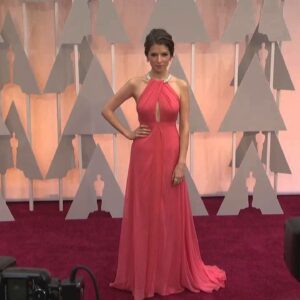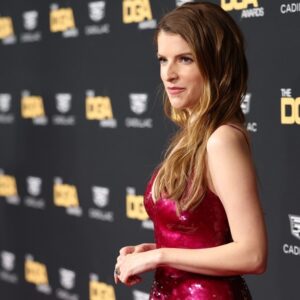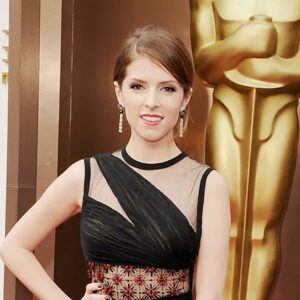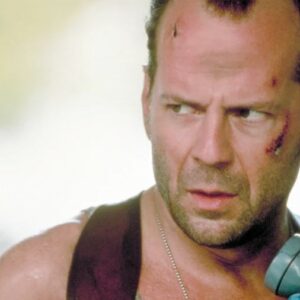Jennifer Hudson’s music videos are as iconic and powerful as her voice, each one serving as a visual extension of the emotion and depth she pours into every lyric. From heart-wrenching ballads to empowering anthems, Hudson’s music videos have evolved into masterpieces that perfectly encapsulate her artistic vision, vocal prowess, and personal brand. These videos go beyond mere promotion—they are storytelling vehicles where every frame complements the themes of her music. However, behind every successful Jennifer Hudson video stands a director—a visionary who brings Hudson’s emotional intensity to life through a careful orchestration of imagery, tone, and narrative.
In the world of music, where an artist’s image is as significant as their sound, Hudson’s music videos have been instrumental in shaping her public persona. Much of this success can be attributed to the collaboration between Hudson and the directors who understand the delicate balance between visual storytelling and her powerful vocal delivery. It is the director who translates Hudson’s music into a visual language that speaks directly to her audience. In this exploration of Hudson’s music videos, we delve into the role of directors in crafting her visual narrative, from the cinematic elegance of “Spotlight” to the raw emotional power of “Where You At.”
The Art of Direction: Storytellers Beyond the Screen
A director’s role in the making of a music video cannot be understated. For Jennifer Hudson, whose music is often emotionally charged and narrative-driven, the visual representation of her songs requires more than just a good eye for cinematography—it demands an acute understanding of storytelling. Directors like Diane Martel, who helmed the music video for “Spotlight,” and Anthony Mandler, who brought “Where You At” to life, are much more than mere facilitators; they are co-creators in crafting the world that surrounds Hudson’s music.
Take “Spotlight,” for instance. Directed by Diane Martel, this video showcases Hudson in a series of sleek, high-contrast settings that mirror the song’s themes of insecurity and empowerment. Martel uses stark lighting and minimalist backdrops to place Hudson at the center of the viewer’s attention—much like the lyrics of the song, which focus on the pressures of being constantly under scrutiny. The video does not rely on elaborate sets or intricate plotlines; instead, it magnifies the emotional intensity of the song by focusing on Hudson herself, turning the camera into a spotlight that follows her every movement, every note.
Anthony Mandler’s direction of “Where You At” is another excellent case study in how directors craft the emotional narrative. The video is set in a bleak, urban landscape, with the cold visuals reflecting the raw vulnerability of Hudson’s vocals. Mandler captures the weight of heartbreak, using wide shots of desolate streets to amplify the loneliness conveyed in the song. As Hudson moves through the empty cityscape, Mandler’s choice of color palettes—dark grays and muted blues—create a visual metaphor for isolation. These artistic choices underscore the themes of the song, allowing the viewer to feel the depth of the heartbreak not just through Hudson’s voice but through the visuals.
In both examples, the directors act as storytellers, using visual cues to deepen the narrative that Hudson’s music begins. Their ability to match the tone, mood, and message of her songs with carefully curated aesthetics creates a seamless experience for the audience, one where the music and visuals are in perfect harmony.
Crafting the Visual World: A Collaborative Process
While the director holds the reins in crafting the music video’s visual landscape, Jennifer Hudson herself plays a vital role in shaping the final product. Hudson, known for her attention to detail and her strong sense of personal identity, often collaborates closely with directors to ensure that the video aligns with her artistic vision.
In many of her videos, Hudson’s input is apparent—not just in the way she performs, but in the way the overall video feels. Take the video for “If This Isn’t Love,” directed by Brian Barber. The video features intimate close-ups of Hudson, set against a backdrop of sunlit landscapes. It’s Hudson’s suggestion to focus on natural light and open spaces, symbolizing freedom and emotional vulnerability, that gives the video its signature warmth. Barber’s technical expertise—his use of slow-motion shots and lens flares—combines seamlessly with Hudson’s input, creating a video that feels both personal and universal.
This synergy between artist and director is crucial in creating a music video that resonates with audiences. In the case of Hudson, her directors guide the technical aspects of the shoot—lighting, camera angles, editing—while Hudson ensures that her personality and performance remain front and center. It’s this balance that gives her videos their distinct emotional depth, turning them into extensions of her musical persona.
Directors often act as interpreters of Hudson’s emotions, taking cues from her lyrics and performance to create a visual language that enhances the narrative. In the video for “I Still Love You,” directed by Tabitha Denholm, the director transforms a simple narrative of love and acceptance into a multi-layered story of family, identity, and social progress. The video, set at a same-sex wedding, is a powerful statement on love and equality—themes that Hudson is deeply passionate about. Denholm’s direction adds layers of meaning to the song, using diverse casting and intimate camera work to tell a broader story of love in all its forms. Once again, the collaboration between Hudson and the director results in a video that is as emotionally rich as the song itself.
Aesthetic Consistency and Evolution
One of the hallmarks of Jennifer Hudson’s music videos is the consistency in her visual branding. Over the years, Hudson has developed a signature aesthetic—bold, elegant, and emotionally charged. Directors play a crucial role in maintaining this consistency, ensuring that each video aligns with her evolving image while still feeling uniquely fresh and relevant.
In “Remember Me,” directed by Philip Andelman, the director uses a mix of rich, saturated colors and dynamic camera angles to create a sense of drama that matches Hudson’s powerhouse vocals. The video’s visual intensity—heightened by the use of lighting and shadow—mirrors the emotional weight of the song, creating a cohesive experience where the music and visuals are perfectly aligned.
This attention to detail extends beyond color palettes and camera techniques. Directors working with Hudson are also tasked with maintaining a sense of continuity across her body of work, ensuring that each video feels like part of a larger artistic narrative. In this way, Hudson’s music videos act as chapters in an ongoing story of growth, empowerment, and self-discovery.
Pushing Boundaries: Directors as Innovators
In the realm of music videos, innovation is key to standing out. Jennifer Hudson’s directors are no strangers to pushing boundaries, often experimenting with new techniques and visual elements to create videos that are both artistically groundbreaking and emotionally resonant.
One of the most notable examples of this is the use of CGI in the video for “Gone,” directed by Anthony Mandler. The video features Hudson in a series of surreal, dreamlike environments—floating through clouds, walking across water—created entirely through CGI. These visual elements not only add a sense of grandeur to the video but also serve as a metaphor for the song’s themes of transcendence and emotional liberation. Mandler’s use of technology in the video elevates it beyond the standard music video format, turning it into a visual spectacle that complements Hudson’s soaring vocals.
Similarly, in “Walk It Out,” directed by Director X, the choreography becomes a central storytelling device. The video features Hudson walking through a cityscape, her every step accompanied by dancers who move in sync with her. The choreography, which blends hip-hop and contemporary dance styles, serves as a visual representation of the song’s message of confidence and self-assurance. Director X’s innovative use of movement and space transforms the video into a kinetic experience that amplifies the energy of the song.
The Impact of Directors on Fan Engagement
For artists like Jennifer Hudson, who have cultivated a dedicated fanbase, music videos are more than just a marketing tool—they are a way to connect with fans on a deeper emotional level. Directors play a critical role in creating videos that not only showcase Hudson’s talent but also resonate with her audience.
The success of videos like “And I Am Telling You I’m Not Going” speaks to the power of strong direction in fan engagement. Directed by Bill Condon, the video is a simple, performance-based piece that highlights Hudson’s raw emotion and vocal power. There are no flashy effects or intricate plotlines—just Hudson, a microphone, and a camera. Yet, the video has become one of her most iconic, amassing millions of views and generating a deep emotional connection with fans. It is a testament to the director’s ability to tap into the emotional core of the song and present it in a way that feels authentic and relatable.
Conclusion: The Visionary Role of Directors in Hudson’s Visual Success
In the world of music videos, the role of the director is often overlooked, but when it comes to Jennifer Hudson’s body of work, their influence is undeniable. From the sleek elegance of “Spotlight” to the raw emotionality of “Where You At,” Hudson’s music videos are a testament to the power of visual storytelling. Her collaborations with directors have resulted in videos that not only enhance her songs but also resonate deeply with her audience. It is through this synergy of sound and vision that Jennifer Hudson has solidified her place as one of the most compelling artists of her generation.





